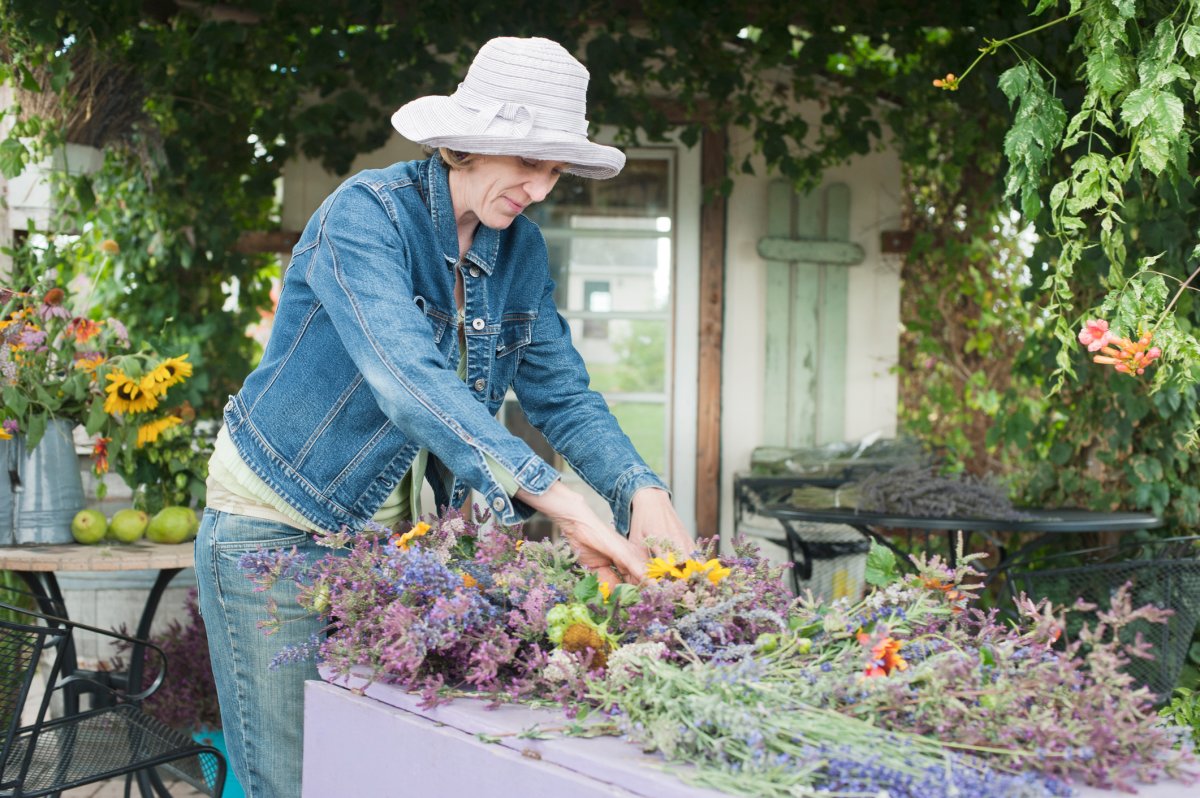

We may earn revenue from the products available on this page and participate in affiliate programs. Learn More ›
This summer, flower lovers are discovering a delightful secret that seasoned gardeners have known for years: herbs make extraordinary additions to fresh bouquets. What started as a simple way to use extra garden herbs has blossomed into one of the season’s most charming trends, transforming ordinary floral arrangements into aromatic masterpieces that engage multiple senses.
“Flowering herbs are having their moment—and deservedly so,” says Magda Callery, founder of Style by Magda and a seasoned interior designer and passionate florist based in the United Kingdom. “They are wonderful to smell, stunning to look at, and double the fun for both garden and culinary use. These herbs don’t merely enhance bouquets—they flavor the home. Vase to the dinner plate, they add beauty, flavor, and a little extra summer joy.”
We spoke to several experts to discover seven delicious-smelling herbs to include in an herb bouquet that are attractive and can benefit an outdoor flower garden by deterring pests. Some can even be used in the kitchen for preparing home-cooked meals or soothing herbal teas.
1. Lavender (Lavandula angustifolia)
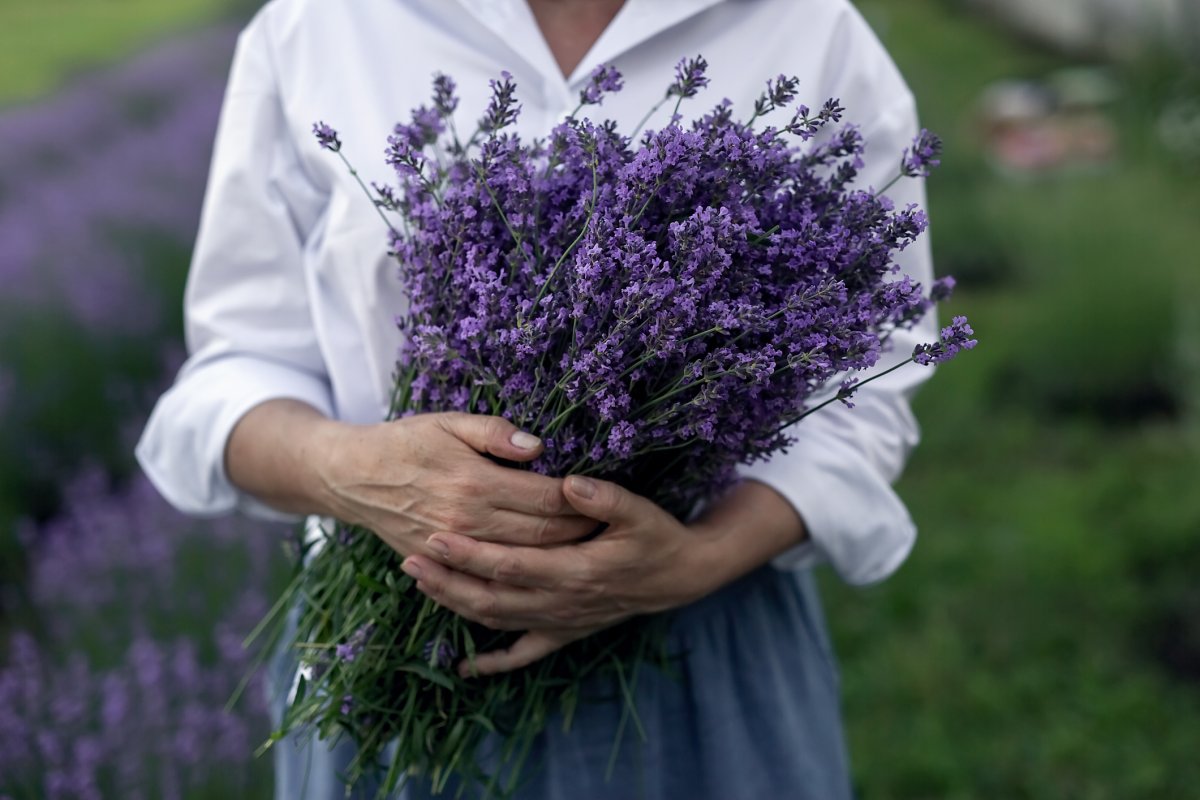
Known for its relaxation benefits and gorgeous purple flowers, lavender makes a lovely addition to any flower bouquet or dried flower arrangement. “Lavender brings soft color, a calming scent, and natural mosquito-repelling quality,” says Callery. The oil from the plants serves as a deodorizer, disinfectant, and repellent. Lavender also keeps ticks and deer away. “It naturally blends with garden roses and makes its way into teas, syrups, or tucked away in linen closets,” says Callery. When growing the herb outdoors, it attracts pollinators like bees and butterflies to the garden.
Best For: Providing a calming aroma, adding vivid purple flowers to a bouquet, and deterring ticks and mosquitoes.
Our Recommendation: Home Grown English Lavender Seeds at Amazon for $6.99
Sourced in the United States, this packet contains 1,500 high-quality non-GMO lavender seeds for plentiful planting.
2. Rosemary (Salvia rosmarinus)
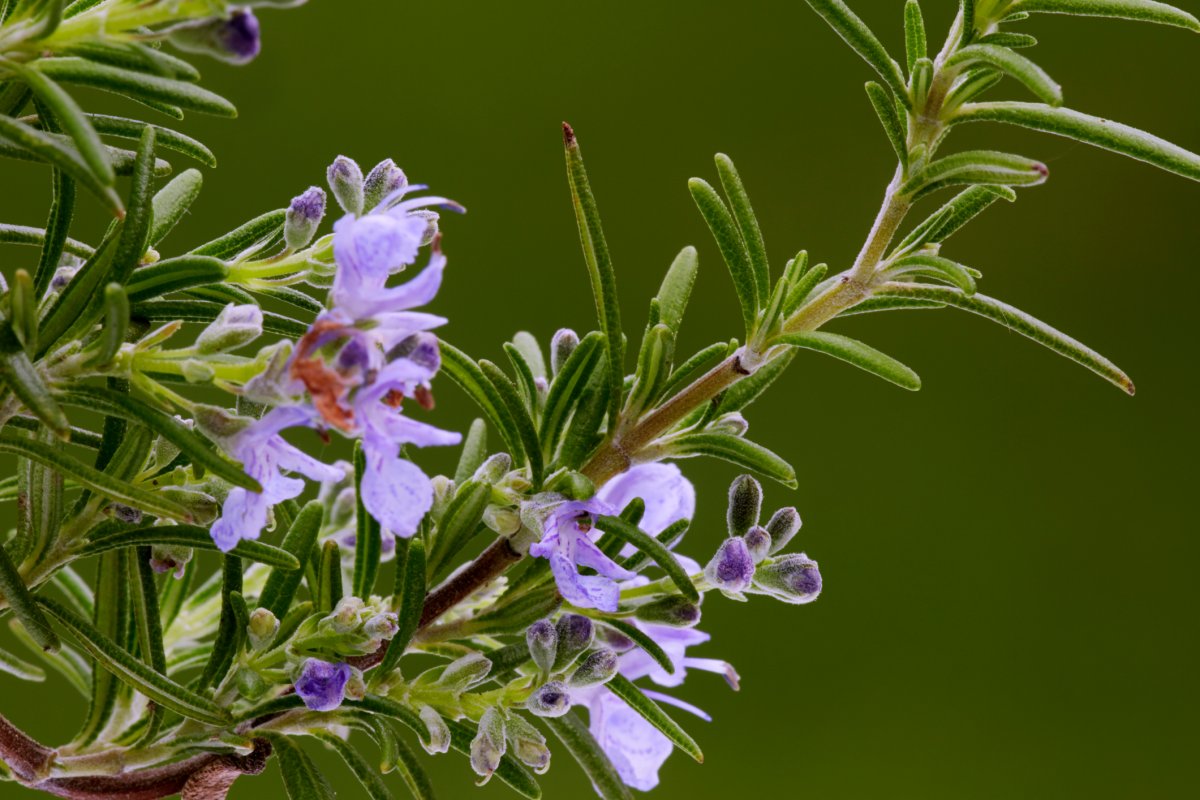
Rosemary is another favorite herb to use side-by-side with ornamentals, adding structure, color, and fragrance. It is a woody evergreen perennial herb with blue and purple flowers and a pleasant woody aroma. “It provides texture to a bouquet, repels cabbage moths in the garden, and in the kitchen adds to roasted potatoes or grilled meat,” explains Callery. Indeed, rosemary is a common seasoning for poultry, lamb, stews, and soups. In addition, this herb’s strong-smelling natural oils can help keep away mosquitoes, flies, aphids, mites, beetles, and ticks.
Best For: Adding structure to a bouquet and keeping a number of pests away from the garden.
Our Recommendation: Home Grown Rosemary Seeds at Amazon for $6.99
Sourced in the United States, this pack of 150 heirloom, non-GMO rosemary seeds is high-quality and suitable for indoor or patio gardens, hydroponic systems, and traditional outdoor planting.
3. Basil (Ocimum basilicum)
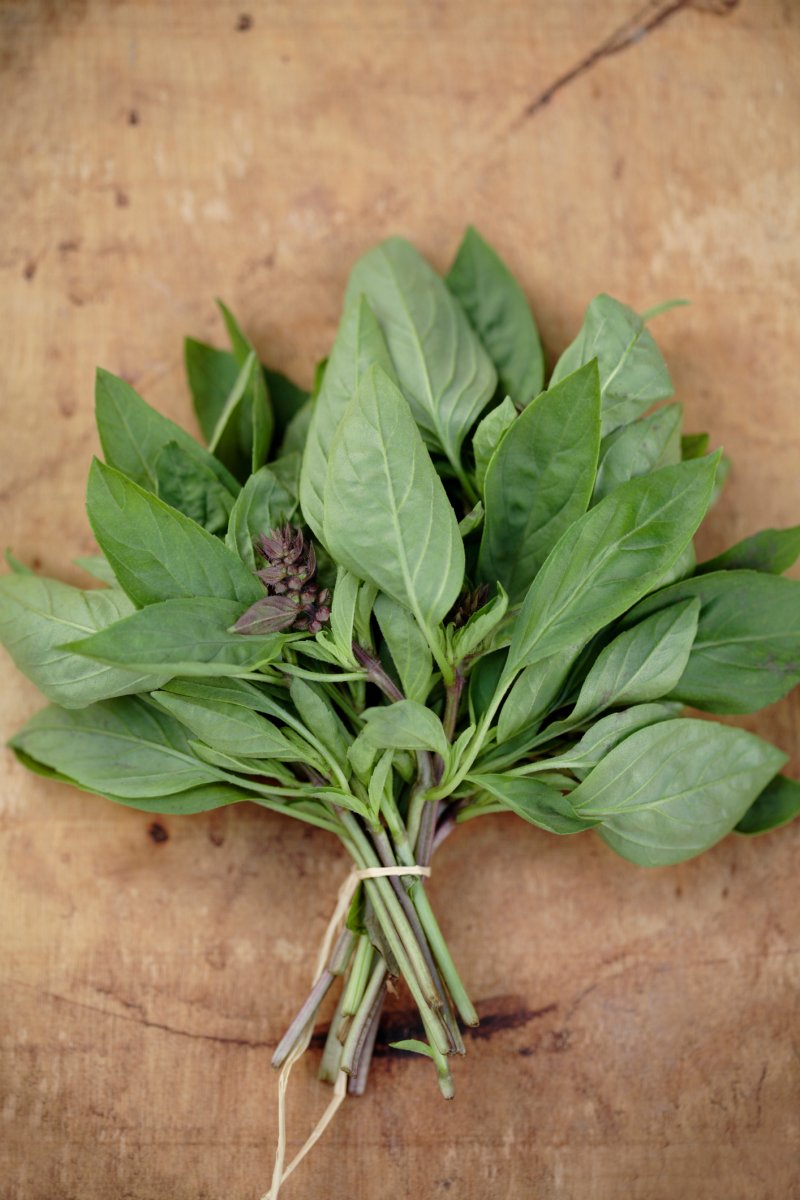
“Basil, particularly the darker purple varieties, is beautifully thrown in with flowers,” says Callery. It’s also a natural pest repellent, scaring away flies, hornworms, mosquitoes, and thrips. Edwin Dysinger, co-founder of Seedtime, a gardening/farming app based in Nashville, Tennessee, loves including some basil in flower bouquets. “Fresh basil leaves add scent to bouquets, especially in summer-themed or kitchen arrangements,” says Dysinger. Plus, growing basil enhances the flavor and growth of companion plants in the garden, such as tomatoes, peppers, eggplant, beans, asparagus. And, of course, basil is a staple of any kitchen when creating Italian dishes and more.
Best For: Adding a fresh culinary scent to bouquets and deterring several pests from the garden.
Our Recommendation: Seed Needs Basil Seeds at Amazon for $3.99
With 200 seeds per pack, this highly-rated non-GMO and untreated variety can be easily grown inside or outside.
4. Lemon Balm (Melissa officinalis)
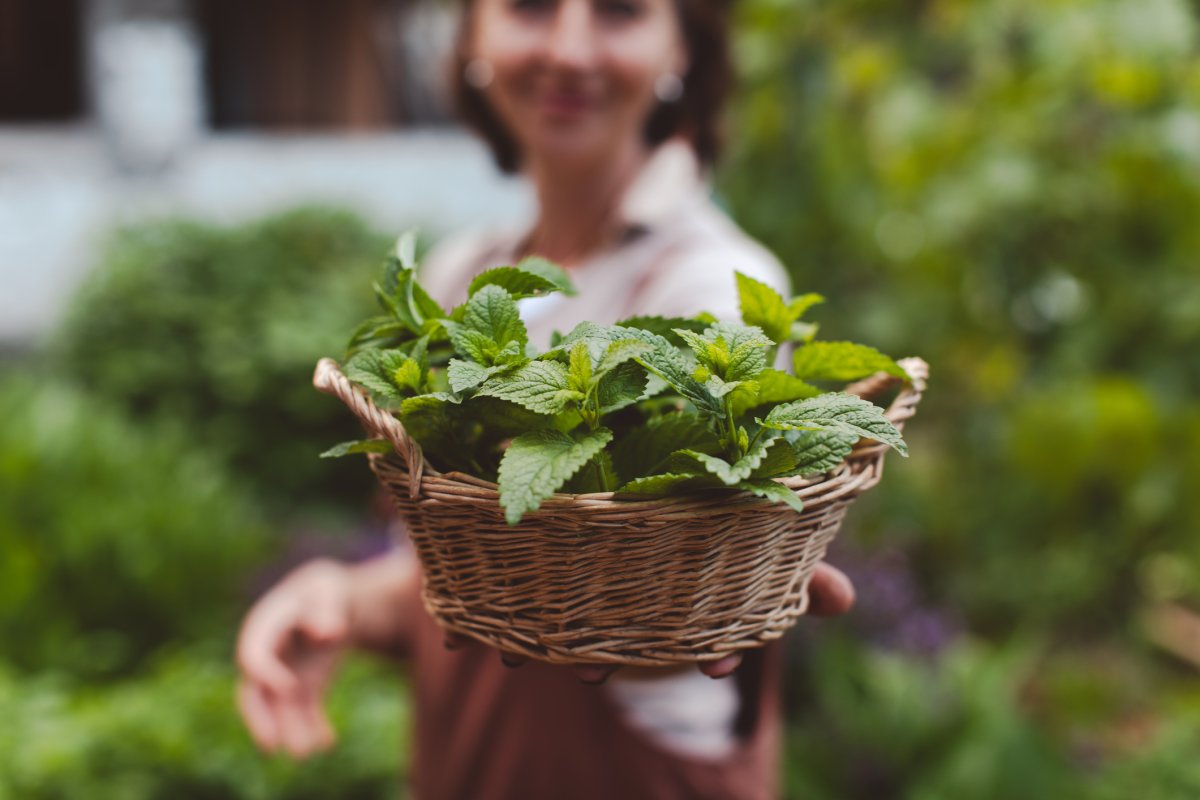
When it comes to herbs that pull double (or triple) duty in the garden, lemon balm is a top pick, says Siobhan Shaw, co-founder and chair of Growing To Give, a nonprofit working to combat hunger, improve food security, and promote environmental stewardship through agricultural and plant-based nutritional development. Related to mint, lemon balm is known for its refreshing scent; serrated heart-shaped leaves; and small blue, yellow, or white flowers. “Lemon balm grows tall, fills out beautifully in a bouquet, and its soft lemony scent is just…happy,” Shaw adds.
“Tuck it into a mason jar arrangement, and suddenly your kitchen smells like summer.” It also supports pollinators and naturally deters unwanted garden pests like mosquitoes with its citrus oils, she says. Dry lemon balm leaves and brew them into a lemony herbal tea that helps people relax and sleep better. Fresh chopped lemon balm leaves can also be added to salads, marinades, fruit dishes, fish, and pesto.
Best For: Enjoying its fresh citrusy scent and incorporating it into a variety of dishes.
Our Recommendation: Home Grown Lemon Balm Seeds at Amazon for $6.99
These heirloom seeds are non-GMO and come in a generous value pack with about 400 seeds.
5. Dill (Anethum graveolens)
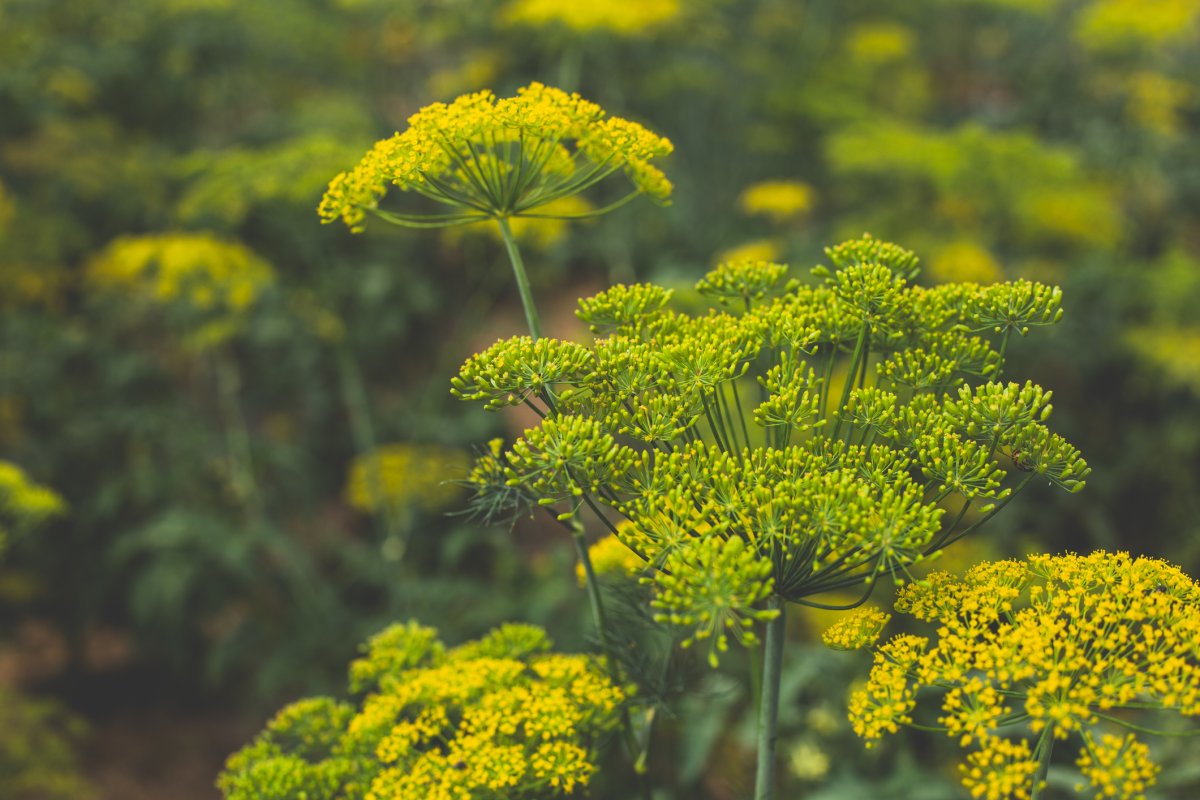
Shaw also loves to add flowering dill to a bouquet when it’s in full bloom. Part of the parsley family, dill is an annual plant with aromatic foliage and seeds. It has small yellow flowers and blue-green leaves that look like tiny fern foliage. “That bold scent wakes up the whole garden. It’s whimsical, feathery, and striking in a wildflower-style bouquet,” Shaw notes. In an herb bouquet, refresh dill flowers with cold water to keep them from wilting too soon.
“Dill is sturdier than people expect and lasts nearly a week if you keep it fresh. Plus, it attracts beneficial insects like lacewings and ladybugs, while confusing the ones that don’t belong.” While dill is most commonly known for flavoring pickles, the fresh or dried seeds and leaves also can flavor a variety of dishes.
Best For: Creating a wildflower-style bouquet.
Our Recommendation: The Old Farmer’s Almanac Seeds at Amazon for $5.99
This packet contains approximately 750 heirloom seeds that are certified organic and non-GMO.
6. Bee Balm (Monarda didyma)
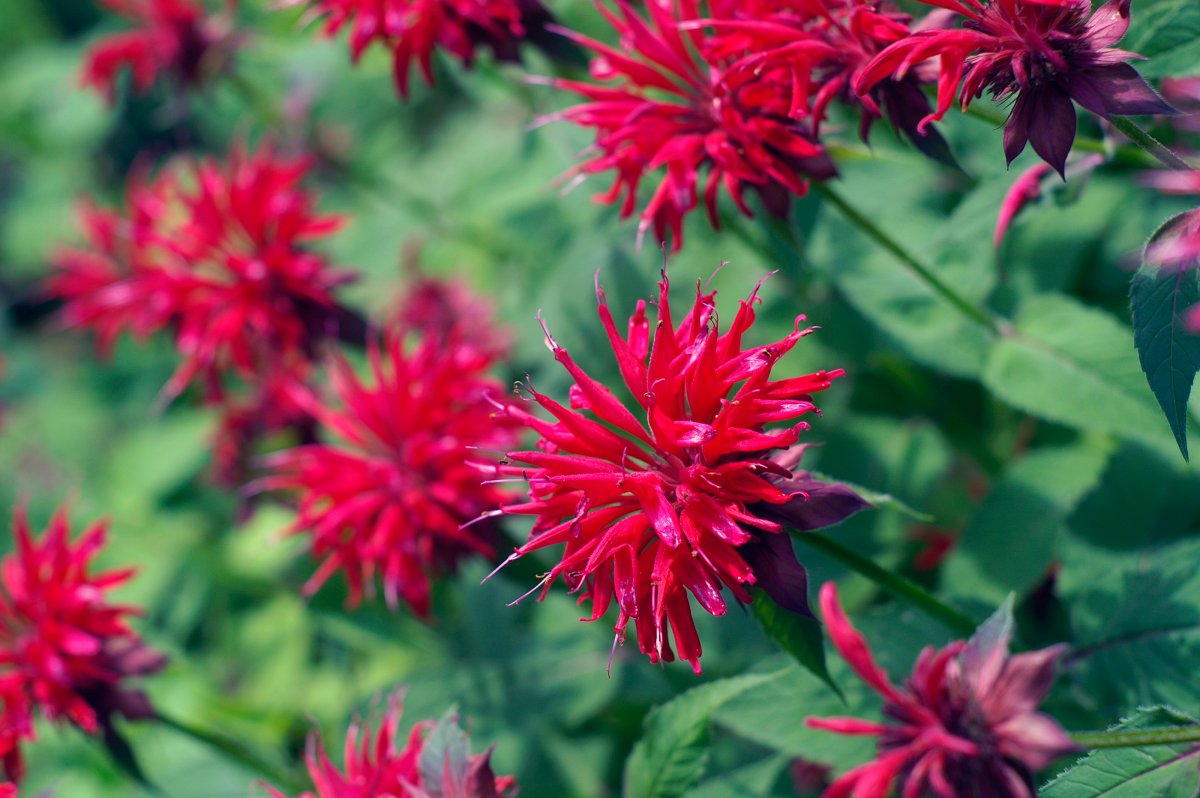
Also known as bergamot, bee balm is a hardy plant that can add a splash of color to your herb garden and bouquet, given its distinctive, brightly colored flowers in shades of pink, red, or purple. “This herb is a total showstopper in the garden with its firework blooms, but don’t overlook the scent; it’s part-mint, part-earthy magic,” says Shaw. “It brings in hummingbirds, butterflies, and bees like a festival, and you can use the petals in teas or toss them into a salad for a little floral flair.” The aroma also helps deter rabbits and deer. Bee balm holds up nicely for several days in a vase, especially if you give it a fresh cut and change the water regularly, says Shaw.
Best For: Providing an eye-catching pop of color and attracting pollinators.
Our Recommendation: Seed Needs Bee Balm Seeds at Amazon for $4.69
These heirloom seeds are fresh, open pollinated, and protected in tear-resistant and moisture-resistant packaging.
7. Marjoram (Origanum majorana)
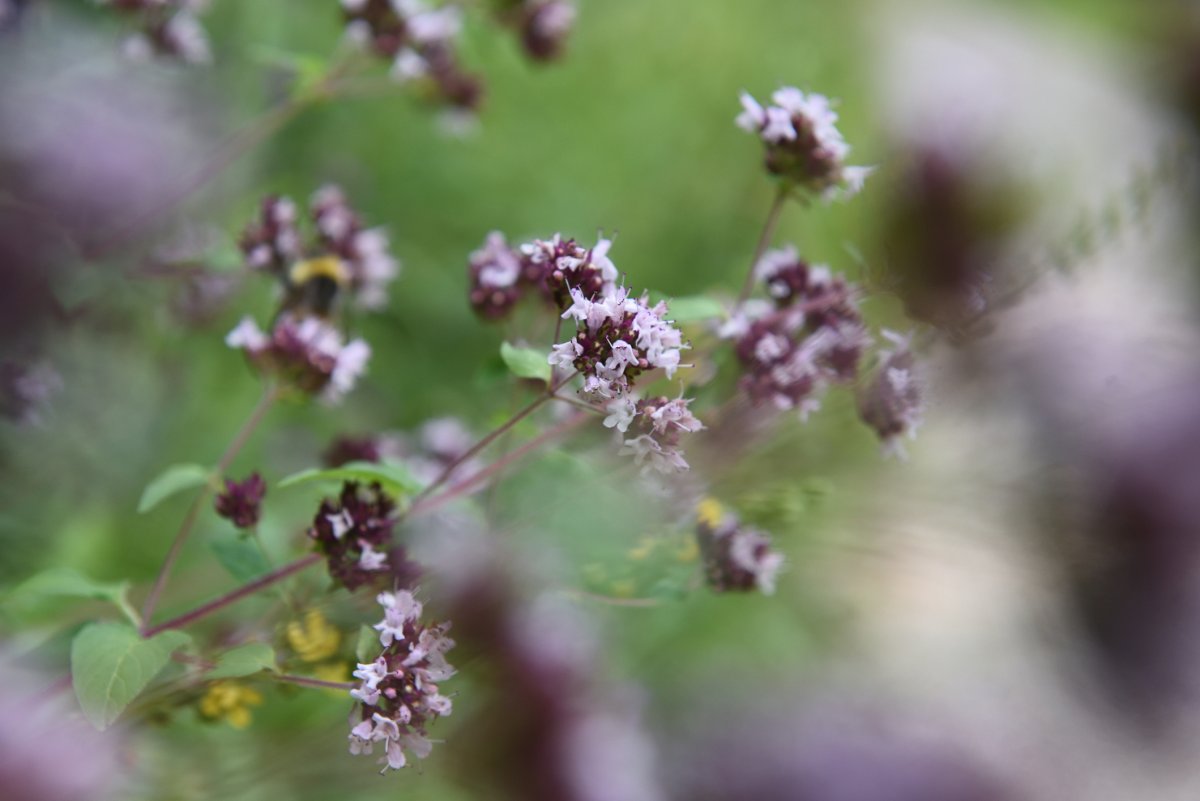
Marjoram flowers appear in midsummer as clusters ranging from white to pink to purple hues. They have a sweet and spicy flavor to help create stews, soups, salad dressings, and sauces. You also can brew the leaves and flowers to make a calming herbal tea. In the garden, marjoram helps boost the growth of basil and carrots, while deterring pests from peppers, beans, cabbage, and strawberries, says Dysinger.
“In bouquets, this herb’s small aromatic flowers and foliage add subtle citrus-herbal scent to arrangements,” says Dysinger. Finally, marjoram helps attract butterflies and other beneficial insects to the garden.
Best For: Helping companion plants and adding a citrus-herbal fragrance to floral arrangements.
Our Recommendation: Sow Right Seeds Marjoram Seeds at Amazon for $4.94
This packet contains 550 non-GMO heirloom seeds that can be grown indoors and outdoors.
